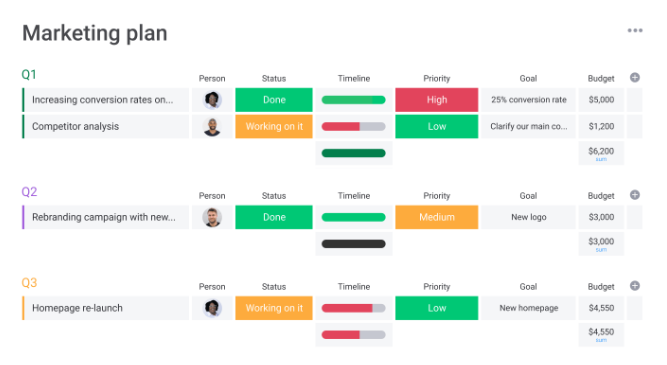What do hiking a trail, driving to a friend’s house, and executing marketing campaigns all have in common? Each requires you to closely follow directions.
Directions are a critical part of our daily life. Used correctly, they can guide decision-making processes, make labor more efficient, and get where you want to go as quickly as possible.
But failing to keep track of directions could cost you—and not just gas money. When it comes to marketing strategies, not having a clear goal tanks web traffic, dissipates brand interest, and costs companies across the United States a whopping $400 billion a year.
Designing a marketing plan is certainly no easy task, but it can be made easier with best practices, strategic tips, and concrete examples from successful businesses all over the world.

Start selling online now with Shopify



What is a marketing plan?
A marketing plan is a strategic document that acts as a guide for marketing campaigns and strategies. These critical road maps detail where you are, where you’re going, and how you plan to get there.
The average marketing plan consists of seven major sections:
- Writing an executive summary
- Discussing the mission statement
- Listing marketing objectives
- Performing a SWOT analysis
- Completing market research
- Designing a market strategy
- Determining a budget
The more detailed a marketing plan is, the more efficient it will be at accomplishing its goals.
As you might imagine, marketers who bother to write a concrete marketing plan enjoy several benefits:
- Organized marketers have a 674% higher chance of reporting success
- Marketers who set goals are 377% more successful than those who don’t
It’s clear that a successful marketing plan opens pathways to other forms of business success—although the process is underutilized at best. More than three out of four small business owners lack an overarching marketing plan if they don’t have a clear path of growth. Creating a holistic marketing plan is absolutely necessary to scale brands at any level of development.
10 marketing plan examples from every industry
It’s much simpler to design a plan of action when the groundwork already exists. Below are 10 marketing plans sourced from real companies and brands around the world, highlighting unique approaches to researching, crafting and implementing a marketing strategy.
1. Contently
Popular SaaS Contently developed a visual marketing plan for developing future campaigns. The strategy depicts its plan in a “waterfall” format, with goals blending into methods of application that eventually lead to success metrics. Although far more casual than other examples on this list, the work provides an excellent overview of a marketing plan’s necessary components.
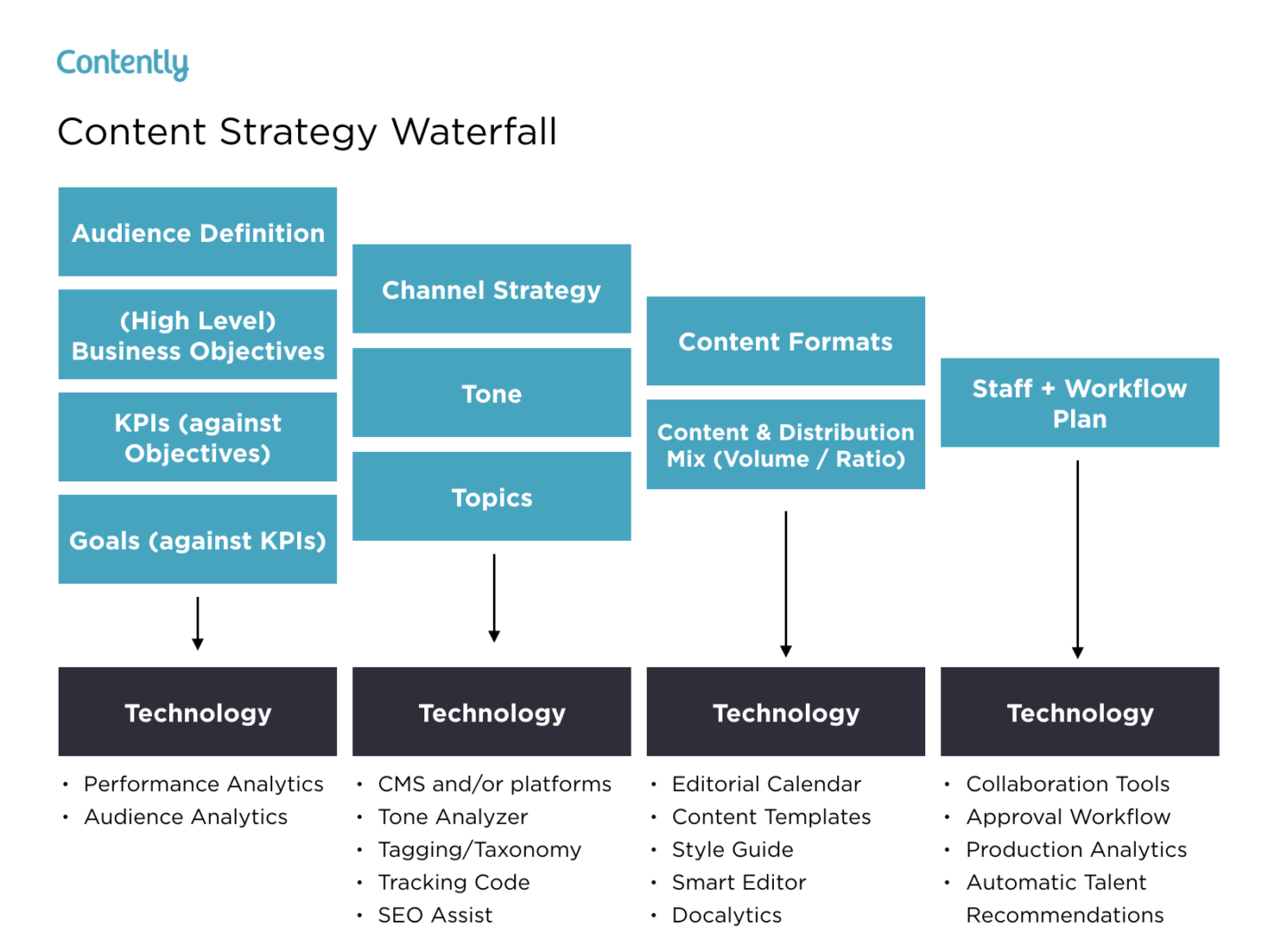
2. Visit Baton Rouge
The Baton Rouge area of Louisiana generates millions of dollars every year from tourism alone. The Visit Baton Rouge marketing plan was born from a need to better position the area and create long-term strategies for generating interest. This 38-page document goes into detail describing different destinations, events, and calendars, including recommended measurements for success.
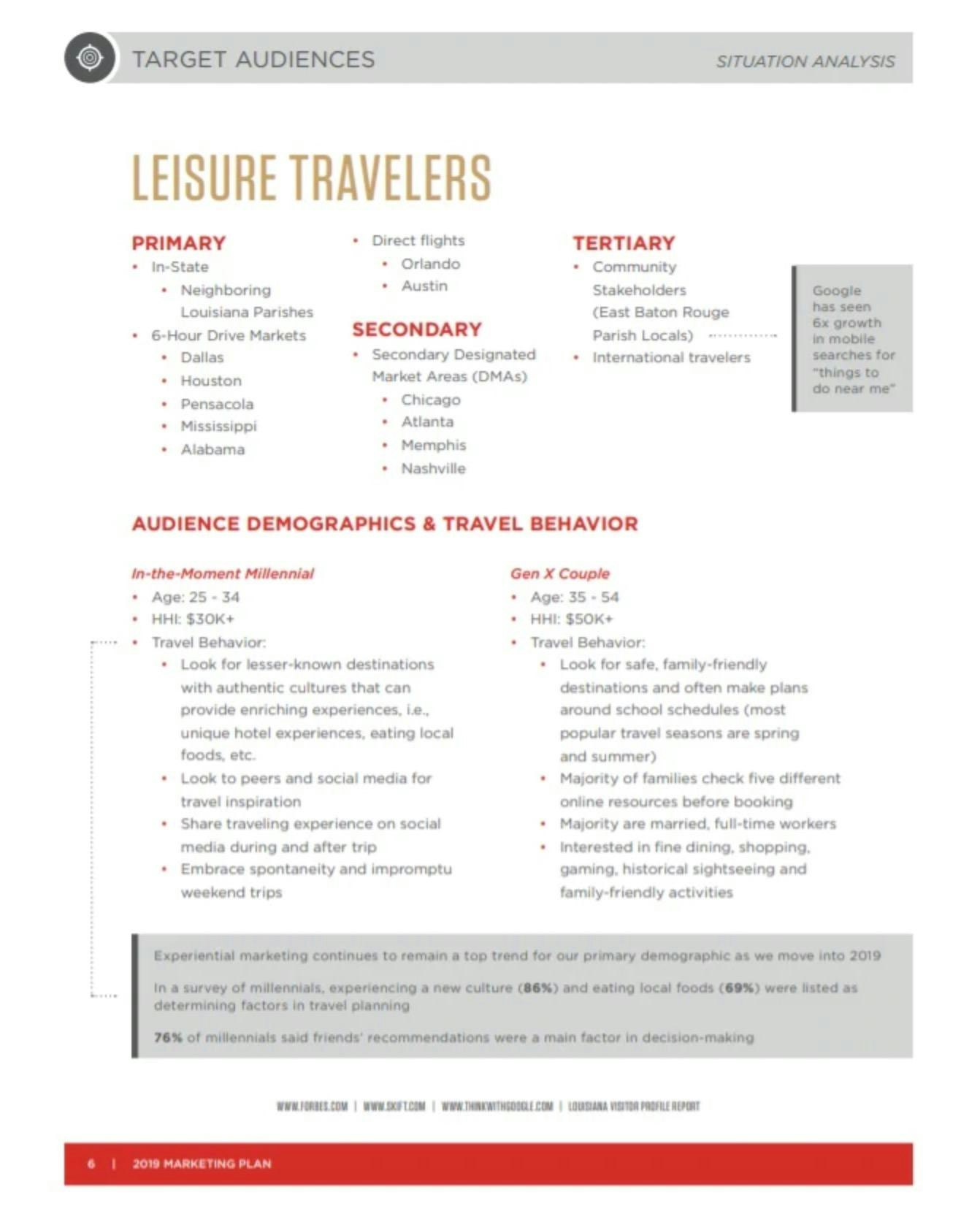
3. HubSpot
Created by SaaS company HubSpot, this template includes a business summary, SWOT matrix, market strategy, budget, and other important aspects of a marketing plan. By filling it out, you can make informed decisions about your company’s positioning and your marketing in general.
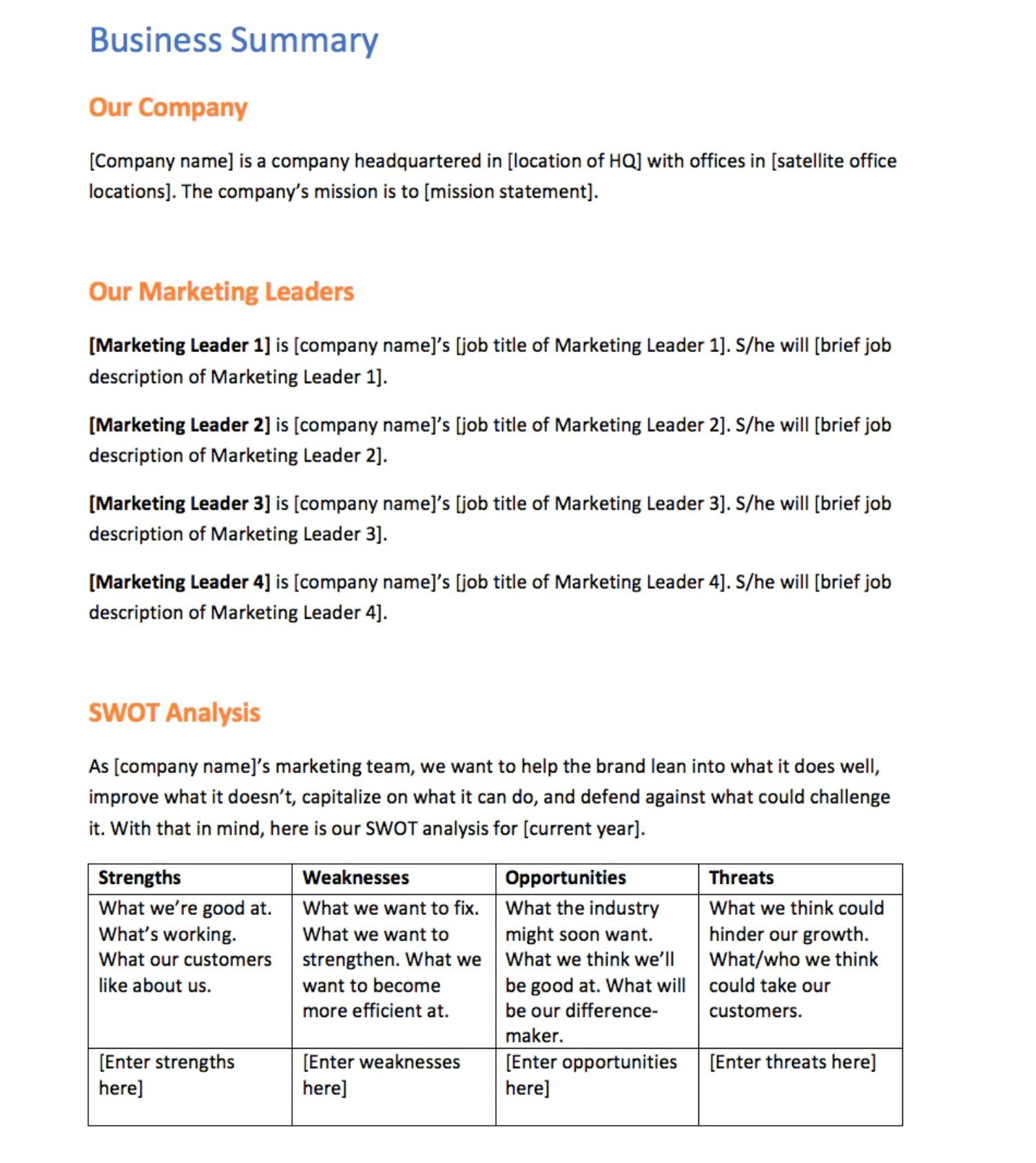
4. Evernote
Evernote provides a comprehensive marketing plan template for businesses of any size. Create a plan that walks through overviews, timelines, research, personas, and all other elements of an airtight campaign. If desired, you can also implement this template into your Evernote account to start developing a marketing plan almost immediately.
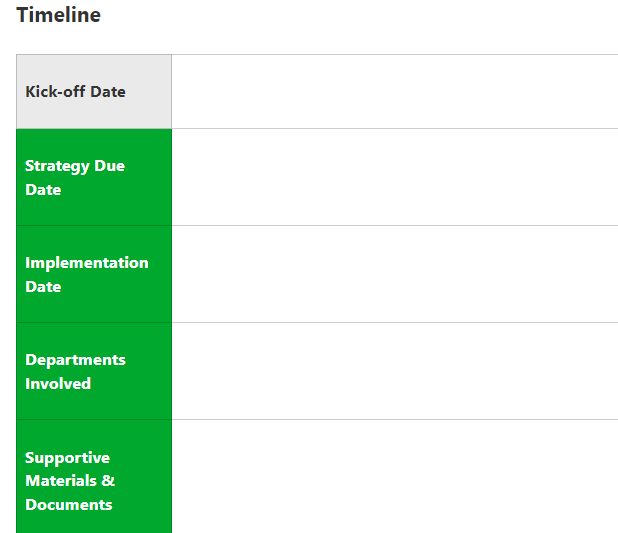
5. University of Illinois
Even educational institutes need marketing plans. The University of Illinois created a very straightforward document that encapsulates its market context, research efforts, and current campaigns. Objectives and success metrics are completed in the third section, with about 40 pages overall.
6. Monday.com
Monday.com is a project management platform providing in-house templates to all active users. This marketing plan offers various categories and subcategories that track project progress with data visualizations. Detailed objectives and KPIs can be identified in-app, including columns for a projected cost range.
7. Lush
Popular health and hygiene brand Lush released a comprehensive marketing plan walking through some products, positioning, and a marketing calendar for upcoming product releases. One of the highlights includes a detailed SWOT analysis with easy to read graphics. This is particularly helpful for brands in the personal care industry, among others.
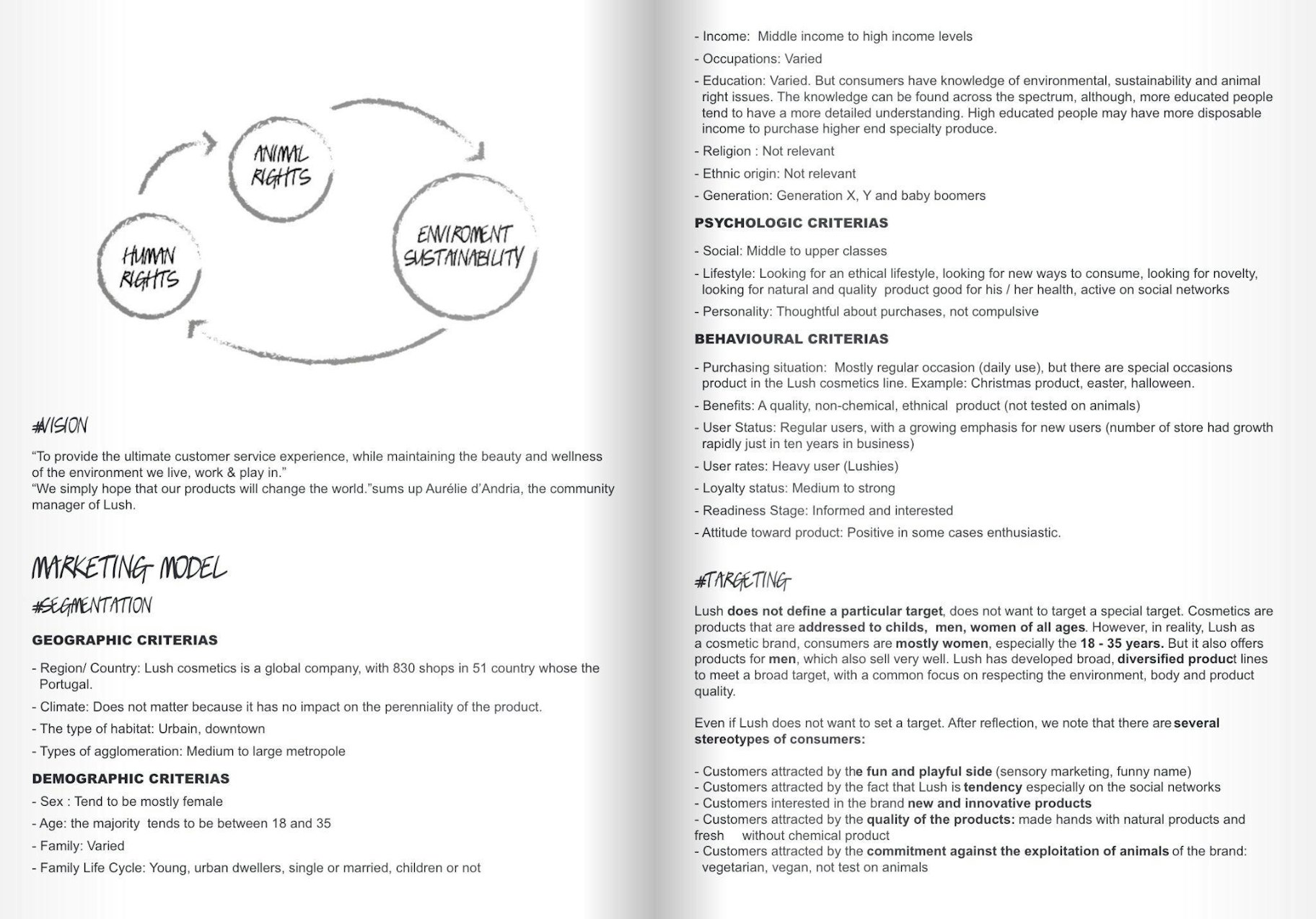
8. Coca-Cola
Industry titan Coca-Cola released a strategy video that encompasses all seven elements of a holistic marketing plan. The proposal primarily explains the major content initiatives for the coming year, and focuses on how the brand’s initial ideas can be practically implemented into the existing strategy.
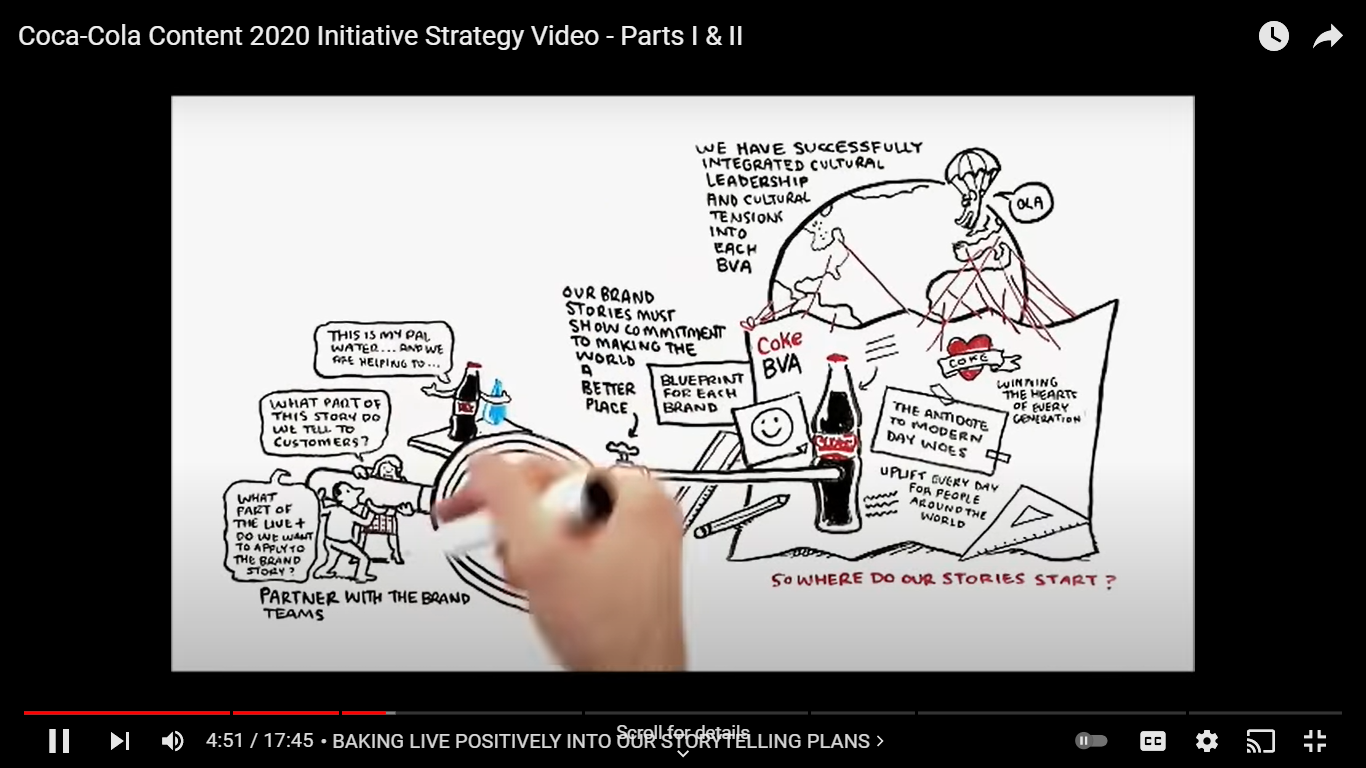
9. Naperville Park District
Publicly funded recreational parks often have limited access to resources, which is why the Naperville Park District created a strategic marketing plan right at the beginning. This extremely detailed document walks through the company’s mission, situational analysis, strategy, and budget, on a micro-level.
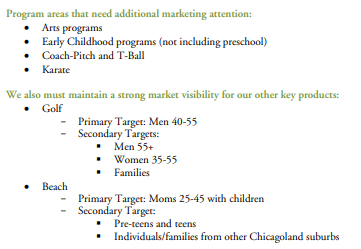
10. Starbucks
Unlike the longform documents we’ve seen already, Starbucks takes a more concise approach. This six-page release details a strategy to elevate CX and brand ambassadors around the world. The marketing plan touches on individual strategies and tactics, as well as the methods used to ensure success. It’s important to note the detailed customer journey profiles that fit into a five-year strategy.
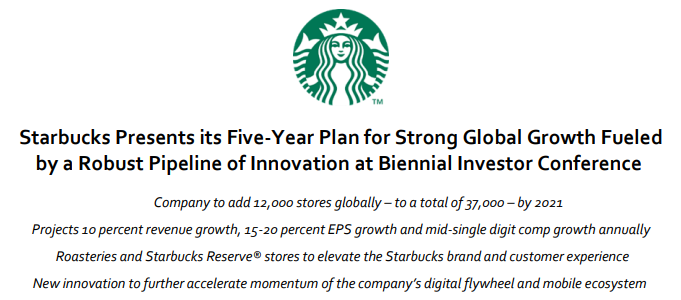
How to approach a marketing plan
Now that you know what a marketing plan looks like, it’s time to explore the initial stages of drafting and publishing your very first plan. Once you establish some basic starting points, a little research is all you need to get started.
Determine your goals
Directions simply don’t matter without an endpoint in mind. Craft some meaningful goals for your marketing campaign that envelop your brand’s values, objectives, and year-end plans. It’s best to use the SMART goal framework:
- Specific
- Measurable
- Achievable
- Relevant
- Timely
The more specific your goals are, the more effective your marketing plan will be.
Check your competitors
Staying abreast of your competitors and market share is critical in the early stages of a marketing plan. Using competitive analysis tools or an internal process, take some time to evaluate the approach that others are using—and how you can do better.
You might want to:
- Perform a competitive analysis
- Keep a close eye on industry news
- Browse competitor social media content
Keep in mind that it’s possible to hire freelancers to perform competitive analysis for you, depending on your needs and time constraints.
Identify your audience
Understanding your target market—including their goals, ages, values, and demographics—is the golden rule of marketing. This can be done several ways, either by using data, creating personas, or outlying features in a document.
It’s best to consider everything that may be relevant to your audience in the marketing plan, including how products can be positioned in a way that makes them relevant. For example, a customer with a degree in IT would be more interested in ads that speak to their experience and industry pain points.
If you don’t have a target audience in mind yet, consider using programs like Google Analytics or in-platform insights from Facebook to identify specific segments.
Craft final KPIs
The difference between a good marketing plan and a great marketing plan starts with key performance metrics (KPIs). These will be used to measure the effectiveness of your campaign and provide detailed information about what worked, what didn’t, and what you can change in the future.
Every marketing plan should rely on its own unique set of metrics, all fitted to individual needs. If you’re looking for specific examples, you might want to try:
- Raising the number of followers on a social media account
- Generating a certain amount of website leads
- Achieving higher email open rates
Keep in mind that your final metrics should adhere to the SMART method for best results.
Perform your revisions
The marketing plan is a living document and must be updated regularly to remain current. The average plan only has a shelf life of one to five years, on average, and should receive regular revisions in the meantime.
Take a closer look at your past goals, competitors, audience, and KPIs. Are any of these outdated or ill-aligned? What has changed for the company since its initial publication date? Make these adjustments accordingly (and hopefully with members of a team or committee).
Create marketing plans that guide your business well
It’s not enough to just write a marketing plan. In an increasingly competitive world of iron-clad strategies, marketing pros should take their time developing a plan that lasts. The above examples are a great place to start, especially as you craft an approach that is catered to your industry.
Keep an eye on the growth of your business once your marketing plan hits the shelves. Continue to find new ways to optimize, refine, and otherwise make what you have even better than before. With an airtight marketing plan by your side, the possibilities are virtually limitless.

Start selling online now with Shopify



Want to learn more?
- How to Create a Killer Social Media Marketing Plan
- The Complete Guide to Getting Started With Influencer Marketing
- 7 of the Best Landing Page Examples to Learn From
- Instagram Marketing Tips to Shoot Up Your Sales



